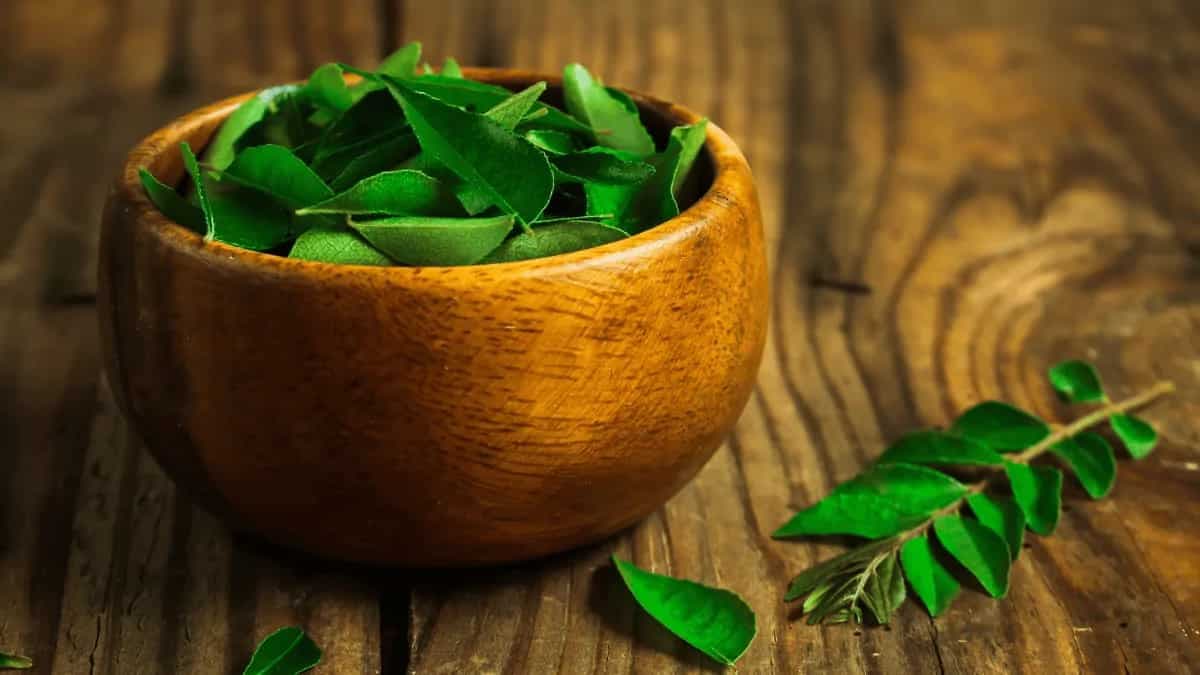In the realm of Indian cooking, where spices and herbs reign supreme, one humble yet indispensable herb stands out – the aromatic and flavorful curry leaf, known as "kadi patta" in Hindi. These unassuming leaves, often overshadowed by the glamour of spices, play an essential role in shaping the intricate tapestry of Indian cuisine. With their distinct citrusy aroma and earthy, slightly bitter taste, curry leaves are more than a mere seasoning; they are a cornerstone of flavour and tradition.
Hailing from the lush landscapes of South India, curry leaves have transcended regional boundaries to become a beloved ingredient across the entire Indian subcontinent. They are revered for their ability to infuse dishes with a fragrant depth that is both subtle and captivating. From the bustling streets of Mumbai to the tranquil backwaters of Kerala, curry leaves are a constant presence in the pots and pans of Indian kitchens.

This exploration delves into the multifaceted role of curry leaves in Indian cooking, uncovering their history, culinary significance, and their unique contribution to seven iconic Indian dishes. From the tempering of dals to the tantalising tadkas, curry leaves have earned their place as an essential herb in Indian gastronomy. Join us on this aromatic journey as we unravel the captivating story of curry leaves and their profound impact on the diverse and flavorful world of Indian cuisine.
1. South Indian Curry:
Curry leaves are the heart and soul of South Indian curries. In dishes like sambar, rasam, and various vegetable curries, curry leaves are added during the tempering process to release their aromatic oils. The leaves infuse the curries with a distinct, earthy aroma and a hint of citrus. This quintessential use of curry leaves exemplifies their importance in South Indian cuisine.
2. Tadka for Dal:
In India, no dal (lentil) dish is complete without a tadka (tempering) of aromatic spices and curry leaves. The tadka of curry leaves, mustard seeds, cumin seeds, and red chilies sizzling in hot ghee or oil adds a burst of flavour and fragrance to the simple yet comforting dal preparations.
3. Coconut Chutney:
Coconut chutney, a popular accompaniment to dosas and idlis, owes much of its flavour to curry leaves. The leaves, along with grated coconut, green chilies, and other spices, are ground to create a delicious, vibrant chutney that balances the heat of the chilies with the freshness of the curry leaves.
4. Biryani:
In the world of biryanis, curry leaves are often used to add a fragrant touch. They are included in the tempering of biryani, infusing the rice and meat with their aromatic essence. The leaves play a supporting role in balancing the complex spices typically found in biryani.
5. Lemon Rice:
Lemon rice is a popular South Indian dish that showcases the bright flavours of lemon and the earthy aroma of curry leaves. After sautéing cooked rice with a tadka of curry leaves, mustard seeds, and lemon juice, the result is a zesty and aromatic rice dish that's perfect for lunch or as a side.
6. Karimeen Pollichathu (Spiced Pearl Spot Fish):
In Kerala, curry leaves are a star ingredient in Karimeen Pollichathu, a traditional fish dish. The leaves are combined with spices, coconut, and tamarind, creating a flavorful paste that's used to coat the fish before it's wrapped in banana leaves and grilled to perfection.
7. Curry Leaf Powder:
Curry leaves are not limited to fresh use; they are also sun-dried and ground into a fragrant powder. This curry leaf powder, or "karivepaku podi" in Telugu, is a versatile seasoning used to enhance the flavour of rice dishes, upma, and idlis. It's typically mixed with ghee or oil before being added to the dish.
Beyond Culinary Uses:
While curry leaves are primarily known for their culinary contributions, they also have medicinal properties and are used in traditional Ayurvedic and herbal remedies. They are believed to aid digestion, lower cholesterol, and have anti-inflammatory properties. Additionally, curry leaf oil is used in aromatherapy for its calming and stress-relieving effects.
Growing Curry Leaves:
Curry leaves are best when fresh, and they can be grown at home or in a garden with the right conditions. They thrive in warm, tropical climates and require well-drained soil and ample sunlight. With proper care, you can have a continuous supply of fresh curry leaves to enhance your culinary creations.
Curry leaves are an indispensable ingredient in Indian cooking, bringing a burst of flavour and aroma to a wide variety of dishes. Their citrusy and earthy notes, along with their herbal undertones, make them a beloved herb in Indian cuisine. From South Indian curries to North Indian tadkas, curry leaves leave an indelible mark on the diverse tapestry of Indian flavours. They are a testament to the power of simple, natural ingredients in elevating the taste and sensory experience of food.


